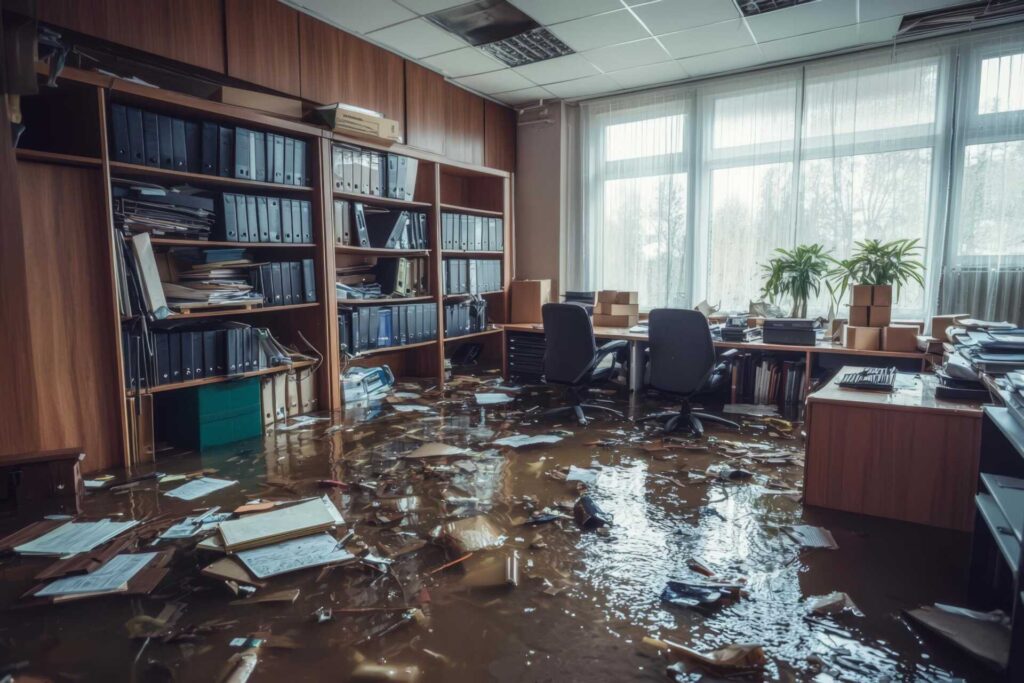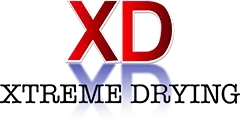
Contents
When faced with water damage in a commercial setting, effective extraction is essential to minimize losses and ensure safety. You’ll need to assess the extent of the damage thoroughly and select the right equipment for efficient removal. Understanding proper techniques and safety protocols will help prevent further complications. But that’s just the beginning—there are additional strategies you must consider to ensure a successful recovery.
Key Takeaways
- Conduct thorough assessments of water damage to identify the type of water and areas needing immediate attention.
- Select appropriate water extraction equipment based on the scale of the job and the type of water present.
- Implement effective drying and dehumidification techniques to prevent mold growth and ensure complete moisture removal.
- Prioritize safety by wearing PPE and assessing electrical hazards in affected areas during extraction and restoration.
- Develop a maintenance schedule and preventive measures to minimize the risk of future water damage and enhance property resilience.
Assessing the Extent of Water Damage
How do you determine the severity of water damage in a commercial space? Start by visually inspecting the affected areas. Look for visible signs such as discoloration, warping, or buckling in walls and floors.
Assess the type of water involved—clean, gray, or black—as this impacts the severity and necessary remediation steps. Next, measure moisture levels using a moisture meter; this helps you identify hidden water within structures.
Don’t forget to check for mold growth, which can indicate prolonged exposure. Pay attention to the duration of the water exposure; the longer it stays, the greater the damage.
Finally, document your findings with photos and detailed notes, as this can guide recovery efforts and insurance claims. By systematically evaluating these factors, you’ll gain a clearer understanding of the damage and how best to address it, fostering a sense of community and support as you navigate this challenging situation.
Choosing the Right Equipment for Water Extraction
Choosing the right equipment for water extraction is vital for effective results.
You’ll need to take into account the types of extraction equipment available and how efficient they’re in removing water.
Selecting the appropriate tools will greatly influence the speed and thoroughness of the extraction process.
Types of Extraction Equipment
When faced with water extraction tasks, selecting the right equipment is essential to ensure efficiency and effectiveness.
You’ll typically choose between submersible pumps, truck-mounted extractors, and portable extractors. Submersible pumps are excellent for deep water removal, while truck-mounted systems offer high-capacity extraction for larger areas. Portable extractors are ideal for tight spaces and smaller jobs, allowing flexibility in various environments.
Consider the specific needs of your project, including the volume of water and the area size. It’s also important to evaluate factors like power sources and mobility based on your operational environment.
Equipment Efficiency Considerations
To ensure effective water extraction, assessing equipment efficiency is crucial, especially as different projects present unique challenges.
Choosing the right equipment can greatly impact your success. Here are key factors to take into account:
Pump Capacity: Verify the pump can handle the volume of water you expect.
Portability: Select lightweight, easily transportable equipment for tight spaces.
Durability: Choose materials that withstand harsh conditions and extended use.
Energy Efficiency: Opt for equipment that minimizes power consumption while maximizing performance.
Implementing Effective Water Removal Techniques
While many may underestimate the importance of swift action in water removal, implementing effective techniques is essential for minimizing damage and promoting safety.
Start by evaluating the affected area to identify the source of the water and the extent of the damage. Utilize commercial-grade pumps to quickly extract standing water, ensuring you choose a pump suited for the volume and depth of water present.
Follow this with the use of industrial wet vacuums to remove residual moisture from carpets and floors.
Don’t forget to deploy dehumidifiers to expedite the drying process, as this prevents mold growth and structural deterioration.
For porous materials, consider utilizing extraction tools that can deeply penetrate and extract trapped moisture.
Ensuring Safety During the Extraction Process
As you begin the water extraction process, prioritizing safety is essential to protect both yourself and the property.
Adopting safety measures not only prevents accidents but also ensures a more efficient operation. Here are key safety practices to follow:
Wear Personal Protective Equipment (PPE): Use gloves, goggles, and waterproof boots to safeguard against contaminants.
Assess Electrical Hazards: Before starting, confirm that electrical systems are shut off in flooded areas to prevent shock.
Maintain Clear Pathways: Keep extraction areas free of obstacles to avoid slips, trips, and falls during the process.
Monitor Structural Integrity: Regularly check for signs of instability in walls or floors, which can pose serious risks.
Addressing Mold Prevention Strategies
To effectively prevent mold growth in commercial settings, you need to identify moisture sources and address them promptly.
Implementing regular inspections can help catch potential issues before they escalate.
Additionally, ensuring proper ventilation throughout your facility is essential for maintaining a dry environment.
Identify Moisture Sources
Identifying moisture sources is essential for effective mold prevention, especially in commercial settings where humidity can lead to significant structural damage and health issues.
To protect your environment, focus on these key areas:
Leaky pipes: Regularly inspect plumbing for any signs of leaks.
Roof and wall damage: Check for cracks or holes that may allow water entry.
Condensation: Monitor areas with poor ventilation, such as basements and storage rooms.
Groundwater: Assess the site’s drainage systems to avoid flooding.
Implement Regular Inspections
Conducting regular inspections is essential for maintaining a mold-free environment in commercial buildings. By identifying potential problem areas early, you can take action before mold develops. Focus on high-risk zones such as bathrooms, basements, and areas around HVAC systems.
| Inspection Area | Frequency | Action Required |
|---|---|---|
| Bathrooms | Monthly | Check for leaks |
| Basements | Bi-monthly | Assess humidity levels |
| HVAC Systems | Quarterly | Clean and service units |
Make it a priority to document findings and follow up on any necessary repairs. Regular inspections foster a culture of safety and responsibility, allowing you to protect your property and the well-being of everyone who uses the building.
Use Proper Ventilation
While you may not often think about it, proper ventilation is crucial in preventing mold growth within commercial spaces.
By ensuring adequate airflow, you can greatly reduce humidity levels and inhibit mold proliferation. Here are some key strategies to implement:
Use exhaust fans in high-moisture areas, such as kitchens and restrooms.
Open windows whenever possible to promote natural air circulation.
Install dehumidifiers to actively manage moisture levels, especially in basements or storage areas.
Regularly maintain HVAC systems to confirm they’re functioning effectively and circulating air efficiently.
Collaborating With Professional Water Extraction Services
When faced with water damage, partnering with professional water extraction services can greatly expedite the recovery process. These experts bring specialized equipment and knowledge that can greatly reduce the time and cost involved in restoration. You’ll benefit from their experience in evaluating damage and implementing effective extraction methods.
Here’s a quick overview of key advantages:
| Advantage | Description |
|---|---|
| Rapid Response | Professionals often offer 24/7 services, ensuring immediate action. |
| Advanced Equipment | They utilize industrial-grade pumps and dehumidifiers for efficient extraction. |
| Thorough Assessment | Experts evaluate the extent of damage, preventing further issues like mold growth. |
Developing a Post-Extraction Restoration Plan
After engaging professional water extraction services, it’s vital to establish a thorough post-extraction restoration plan.
This plan ensures your space returns to its original condition, safeguarding both your property and your peace of mind.
Here are essential elements to include:
Assessment: Evaluate the extent of damage to all affected areas.
Drying and Dehumidification: Implement drying techniques to prevent mold growth.
Repair and Restoration: Identify necessary repairs, from flooring to drywall.
Prevention Strategies: Develop measures to avoid future water damage.
Summary
In the domain of commercial water extraction, swift action contrasts with the potential for long-term damage if neglected. By evaluating water damage accurately and selecting the right equipment, you set the stage for effective recovery. Safety measures and mold prevention are paramount yet often overlooked. Collaborating with professionals ensures thoroughness, while a solid post-extraction plan safeguards against future incidents. Ultimately, your proactive approach can transform a crisis into an opportunity for resilience and preparedness.
Recent Posts
Why Choose Professional Water Extraction and Mold Cleanup?
When faced with water damage, you can’t afford to overlook the risks of mold growth.
What Are Emergency Water Extraction Services?
Water damage can strike unexpectedly, yet the right emergency water extraction services can make a
Affordable Mold Removal Services for Businesses
Did you know that mold can silently undermine your business’s health and safety standards? Ignoring
